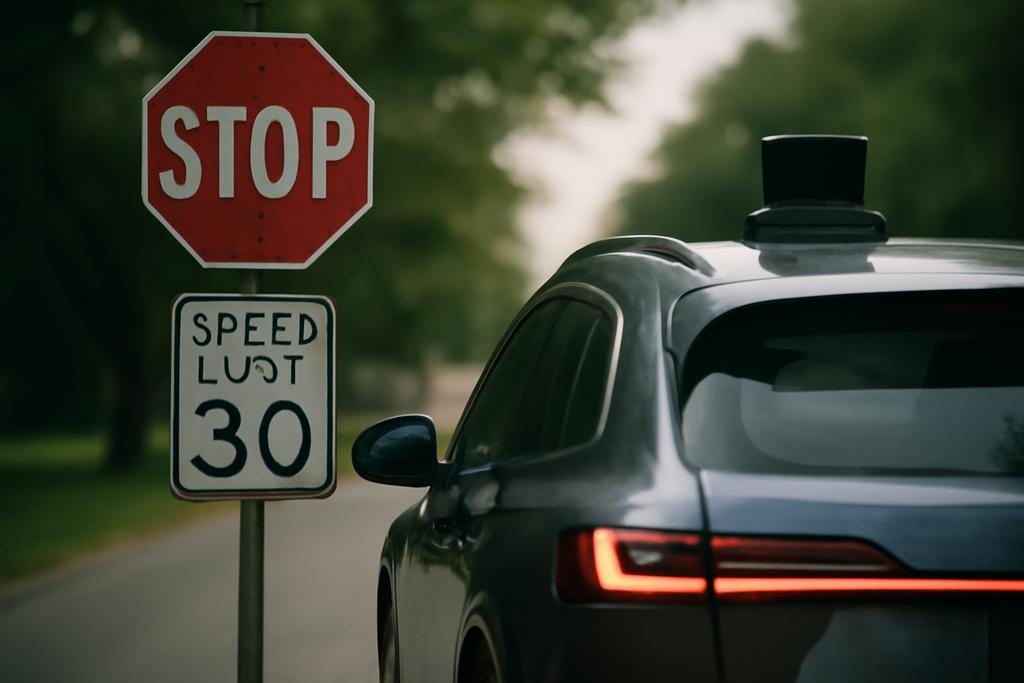Why Traffic Signs Are More Than Just Shapes
In the world of autonomous driving, recognizing a traffic sign isn’t just about spotting a red octagon or a white circle with numbers. It’s about understanding what that sign means — is it a stop sign demanding a full halt, or a speed limit sign nudging you to slow down? This semantic nuance is critical. A self-driving car that confuses these could make dangerous decisions.
Researchers at NEC Laboratories America, led by Sparsh Garg and Abhishek Aich, have taken a deep dive into this problem. They found that many popular datasets used to train autonomous vehicles lump traffic signs into broad, generic categories — often labeling them simply as “traffic-sign-front” or “traffic-sign-back.” This coarse labeling glosses over the vital differences between signs that dictate how a vehicle should behave.
Imagine teaching a child to drive by showing them only blurry, black-and-white photos of signs without telling them what each means. That’s essentially what many AI systems have been doing.
Introducing a New Lens on Traffic Signs
To tackle this, the NEC team created a new validation dataset called Mapillary Vistas Validation for Traffic Signs (MVV). They took 2,000 images from the existing Mapillary Vistas dataset — a rich collection of street scenes from cities worldwide — and painstakingly relabeled every traffic sign into 11 fine-grained, semantically meaningful categories. These include stop signs, speed limit signs, yield signs, and more.
What sets MVV apart is its pixel-level precision. Instead of just bounding boxes around signs, the dataset includes detailed instance masks, allowing models to understand the exact shape and location of each sign in complex urban scenes. This level of detail is crucial for autonomous vehicles navigating crowded streets where signs can be small, partially hidden, or far away.
Vision-Language Models Struggle With the Details
Vision-language models (VLMs) have been hailed as a breakthrough in AI — these systems combine visual understanding with language processing, promising to recognize objects without needing exhaustive labeled data. Models like Gemma-3 and InternVL-3 have shown impressive zero-shot capabilities, meaning they can identify objects they weren’t explicitly trained on.
But when Garg and Aich put these VLMs to the test on their new MVV dataset, the results were sobering. Despite their sophistication, VLMs consistently stumbled when asked to distinguish between fine-grained traffic sign categories. Their accuracy lagged far behind a self-supervised model called DINOv2, which doesn’t rely on language prompts but instead learns robust visual features through pattern matching.
This reveals a surprising blind spot: the very models designed to bridge vision and language falter on the precise, safety-critical details that autonomous driving demands.
DINOv2’s Visual Intuition Outpaces Language-Aided Models
DINOv2, developed through self-supervised learning, excels by focusing purely on visual patterns without textual guidance. When benchmarked, it outperformed all tested VLMs not only on traffic signs but also on recognizing vehicles and pedestrians — categories essential for safe navigation.
This suggests that for tasks requiring dense, spatially grounded understanding — like telling a stop sign from a yield sign — pure visual feature learning currently holds an edge over multimodal approaches.
Why Does This Matter for Autonomous Driving?
Autonomous vehicles must make split-second decisions based on what they see. Misclassifying a traffic sign could lead to running a stop sign or speeding through a school zone. The NEC team’s work highlights that current AI models, especially those relying on vision-language fusion, might not yet be ready for these high-stakes scenarios.
Moreover, the MVV dataset provides a new benchmark for the community to test and improve models on fine-grained traffic sign recognition. By offering high-quality, semantically rich annotations with pixel-level masks, it pushes the field toward more reliable and interpretable perception systems.
Beyond Traffic Signs: The Challenge of Small and Occluded Objects
The study also underscores a broader challenge in computer vision: recognizing small, distant, or partially hidden objects. Traffic signs often fall into this category, but so do pedestrians and cyclists — all critical for safe driving.
Vision-language models struggled here too, revealing that zero-shot generalization is not a silver bullet. Instead, models need to be spatially attentive and capable of fine-grained discrimination to handle the messy, cluttered reality of urban streets.
Looking Forward: A Call for Smarter, More Focused AI
The NEC Laboratories America team’s findings serve as a reality check and a roadmap. They show that while vision-language models are powerful, they aren’t yet the answer for every perception challenge in autonomous driving.
Future research must focus on models that combine the best of both worlds: the rich semantic understanding of language and the precise, spatially grounded visual acuity of self-supervised learning. Only then can we hope to build autonomous systems that truly understand the world around them — down to the last stop sign.
For those interested, the MVV dataset and benchmarking code are publicly available, inviting the AI community to join the quest for safer, smarter self-driving cars.










